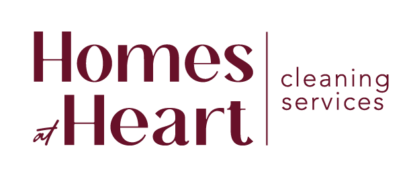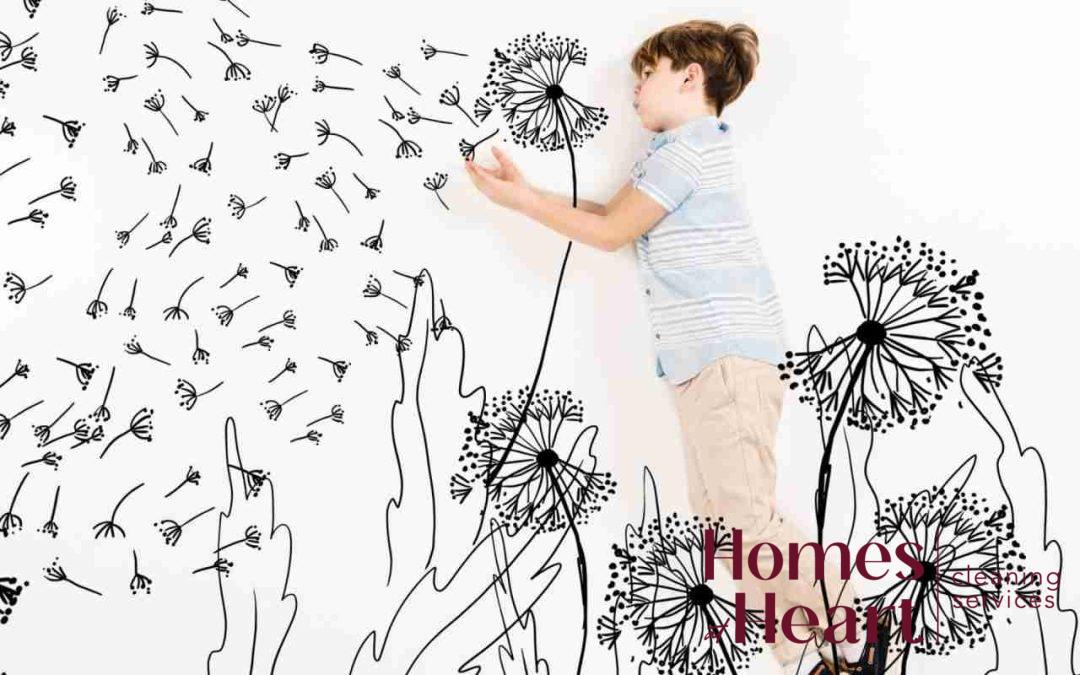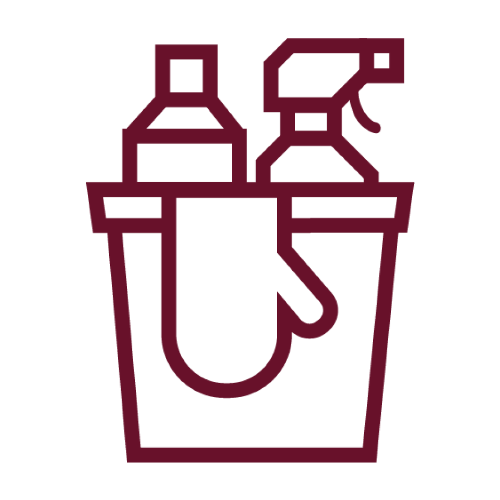Ah, springtime! The birds sing, the flowers bloom, and spring cleaning is upon us. While it’s no fun to do, it is essential for reducing allergies and improving your health. How so? Let’s take a look. Spring cleaning can help rid your home of harmful allergens like pet dander, mold and mildew, dust, and pollen. Plus, it can help you better organize your home, reducing clutter, and promoting a sense of peace.
Utilizing an air purifier, dusting with a damp cloth, and vacuuming regularly with a HEPA filter vacuum cleaner are three spring cleaning tips that can help ease allergies. Other options include replacing the carpet with hardwood flooring or tile and washing curtains and bedding in hot water.
Allergen-Proof Your Home
Allergens such as pollen and pet dander can wreak havoc on your respiratory health, leaving you feeling miserable. To reduce these allergens and improve your overall health, allergen-proofing your home is a key component of your Spring Cleaning routine.
Start in the bedroom by investing in dust mite-proof covers for mattresses, pillows, and box springs. These specialized covers are designed to seal out dust mites and other allergens, creating a more allergen-free environment to sleep in. You should also replace pillows, mattress pads, and comforters every year or two as they tend to collect dust mites over time.
An air filtration system is another way to allergen-proof your home; these systems cleanse the air of irritants within the room. However, there is debate about the effectiveness of air filters; some studies indicate that air purifiers can help reduce pollutants within the home, while other studies suggest their benefit for minimizing airborne allergens is limited.
Finally, don’t forget to bathe pets regularly and remove carpets if possible. Pets carry small particles of skin that trigger allergies, so bathing them frequently can minimize their irritating effects on the respiratory tract. Carpets also trap dust, pollen, and pet dander, so replacing carpets with hardwood floors or area rugs could help drastically limit indoor allergens in your home.
- A study conducted in 2018 reported that 42% of patients who have allergic asthma reported improvements in their symptoms after implementing regular home spring cleaning.
- According to a 2016 survey, 84% of allergy sufferers said that using an air purifier reduced the severity of their allergy symptoms within one week.
- Spring cleaning can reduce environmental allergens by as much as 60%, according to a 2017 research paper.
Dust and Vacuum Your Home
The dust and dirt that accumulates on your furniture, floors, curtains, and counters are a major source of allergens. Vacuuming and dusting are important aspects of creating a healthy environment in your space.
Frequent vacuuming can reduce the number of allergens released into the air. Make sure to vacuum both carpets and upholstery, paying attention to frequently used areas such as around pet beds and seating as these can be breeding grounds for dust mites and other microscopic organisms.
Be sure to use a powerful vacuum cleaner with a HEPA filter that eliminates particles from being released back into the air. If you find yourself limited on time or resources, concentrate on vacuuming the bedrooms first as this is typically where most dust accumulates. Another great way to keep dust from accumulating quickly between general cleans is to use micro velvet fabric for pieces of furniture that include sofas, chairs, etc.
Dusting is also an essential part of cleaning which needs to be done regularly every few weeks with a damp cloth or paper towel. While traditional feather dusters may seem like they do the job well, they simply stir up dust particles which can aggravate allergies.
Make sure to target surfaces like shelves, cabinets, tables, ceiling fans, window sills, knick-knacks, door frames, and crown moldings. You should also wipe down any items or materials that trap or accumulate dust such as books and computer monitors.
Once you’re done cleaning your floors and furnishings properly let some fresh air inside your home by opening windows and doors (weather permitting) in order to ventilate the area more thoroughly.
Now it’s time for the next step in spring cleaning: clearing clutter and areas that can trap allergens. Identifying what’s necessary to keep in your home will create much-needed space while reducing levels of indoor allergens that may cause health concerns.
Clear Clutter and Areas that Trap Allergens
Clearing clutter and keeping your home free of allergens play an integral role in improving your health this spring. By reducing the amount of dust, pet dander, and mold, you can significantly lighten allergy symptoms like coughing and sneezing.
Where applicable, declutter first by throwing away items that you no longer need. Doing this will help eliminate any places allergen particles may become trapped. Areas such as under beds, behind furniture, and inside air ducts should be cleaned out every 6-12 months to ensure that the air you breathe is clean.
Carpets are also a haven for collected allergens due to the fibers trapping dirt and hair, therefore regularly vacuuming with a good filtration system can help reduce your allergies by removing debris from the floor surfaces before it’s circulated into the air. For those who suffer from serious allergies or asthma, replacing carpet with a hard surface floor may be worthwhile as allergens don’t build up as easily on hardwood or ceramic tiles.
It’s also important to invest in some good-quality filters for your HVAC (heating, ventilation, and air conditioning) systems during spring cleaning. These can help trap airborne particulates that could aggravate allergies and make them worse over time.
By taking proactive steps to reduce the number of allergens in our environment during the spring-cleaning season we can start to improve our health and avoid feeling sluggish or experiencing allergic reactions. To further remedy allergens and up our healthcare game this season, the next step is to wash fabrics appropriately.
Wash Fabrics to Remedy Allergens
While washing the fabrics may seem like a simple task, it can go a long way in helping to remedy allergies and improve your health. Clean fabrics on a regular basis by washing bedding, curtains, and upholstered furniture such as sofas and chairs. In addition, regularly launder items used frequently by family members such as blankets, towels, and clothing.
For ultimate allergen protection, be sure to wash all fabrics in hot water (at least 130°F), since this temperature helps get rid of dust mites and other allergens that may be on the fabric; Cold water does not kill off allergens as hot water does. Then dry the fabrics using a high heat setting for about thirty minutes. This will help to ensure any remaining allergens that were missed during the washing process are killed off during the drying process. It is also important to make sure you use non-irritating detergents and fabric softeners as these can contain fragrances and chemicals that can worsen allergies over time.
Others suggest airing out large items outside in direct sunlight for several hours or putting them in the dryer without heat for about 30 minutes to air them out instead of washing or dry cleaning them. This method is thought to help irritate the cells of dust mites which causes them to demobilize and reduces their presence on fabric surfaces.
Picking the Right Cleaners
Chemical cleaners act quickly on soils and germs but come with their own set of cautions and concerns. Natural cleaners, like vinegar, hydrogen peroxide, and baking soda, are also effective and often cheaper. However, they take more time to do the job and may require multiple applications. Consider both options before making a decision.
Chemical cleaners contain harsh ingredients that can trigger asthma attacks or irritation of the eyes and throat. Some people with chemical sensitivities may even experience major allergic reactions to these products. Avoiding ammonia-based products can help reduce skin sensitivity and eye irritation. Look for non-toxic options whenever possible and be sure to always use protective gloves when handling strong chemical cleaning agents.
On the other hand, natural cleaners have an advantage in that they do not cause respiratory problems or skin/eye irritations. And since they are basic household items, you can save money on store-bought cleaning agents by using vinegar or baking soda instead. Keep in mind, however, that natural cleaners have weakened effectivity in comparison to commercial cleaners — meaning that you may need to apply them multiple times for a deep clean.
Allergy-Proof Cleaning Agents
Using the right cleaning agents can drastically reduce the amount of allergens in a home. When it comes to allergies, homeowners would be wise to invest in allergen-proof cleaning agents. Many products on the market are designed specifically to rid homes of allergens like dust mites, pet dander, mold, and other airborne irritants. Cleaning with these specialized products can eradicate 80 – 90 percent of allergens from carpets or furniture.
There is some debate about whether commercially available allergen-proof cleaning agents actually make a difference. Some economic experts point out that many of these “allergy-proof” products are no more effective than a standard household cleaner. On the other hand, clinical studies have found that allergy-proof cleaners with ingredients like sodium hypochlorite and benzalkonium chloride do leave rooms less contaminated with common allergens.
At all costs, homeowners should try to steer away from natural cleaners when cleaning for allergies, as there is evidence that essential oils may trigger an allergic reaction in some people. To be safe, it is best to consult with a doctor before using any special cleaning product or tool.
By investing in allergen-proof products and consulting with a medical professional if necessary, any homeowner can make their house much healthier during spring cleaning season. The next section will discuss specific tips anyone suffering from allergies can use while spring cleaning their home.
Spring Cleaning Tips for Allergy Sufferers
Spring cleaning can be an effective way of reducing allergies, but it is particularly important for people who suffer from allergies to take some extra measures during this time. Spring cleaning tips for allergy sufferers include:
1. Vacuum Regularly: Carpets, floor coverings, and upholstery should be vacuumed frequently using a vacuum cleaner with a high-efficiency particulate air (HEPA) filtration system to reduce the number of allergens in your home. Vacuuming allows for the removal of dust and other allergens such as pollen that are stirred up during spring cleaning activities.
2. Mop Floors: Use a damp mop rather than a broom to clean hard surfaces like tile, hardwood, and vinyl. The damp mop will pick up more allergens than sweeping does. It’s also important to use non-toxic cleaners, as harsh chemicals may trigger allergic reactions.
3. Clean Windows and Blinds: Pollen can build up on window sills and blinds, so make sure to thoroughly clean them at least once a week during allergy season In addition, keeping windows closed during peak pollen hours (usually between 5 and 10 am) is recommended.
4. Replace Bedding: Allergy sufferers should replace their pillows, duvets, and feather beds every 5 to 7 years, or sooner if they appear worn or dirty. Fabric softeners or dryer sheets also release small particles into the air that can hinder breathing, so it is best to avoid them when washing bedding.
5 . Dust Furniture: Allergens can settle on furniture, so try dusting weekly with a microfiber cloth or rag to rid your home of these pesky particles. Be sure to wipe down surfaces before applying furniture polish or any other cleaning chemicals that could potentially irritate the respiratory tract.
Overall, following these spring cleaning tips for allergy sufferers will help reduce their exposure to airborne irritants and improve their comfort level in their homes during the spring season.
Reduce Indoor Allergens with Ventilation
Reducing indoor allergens is one of the most important steps in spring cleaning to improve health and reduce allergies. It can be done by increasing ventilation in your home. This means opening doors and windows, and using fans to create air circulation and allow fresh air to circulate through your living space. Allowing more fresh air in can also help minimize odors, pet dander, and mold which are all common sources of indoor allergies.
The debate on whether it is better to keep doors and windows open or closed to reduce indoor allergens depends on the climate of where you live. In areas that are prone to extreme weather such as strong winds, cold drafts, or heavy rains, it may be better to keep windows and doors closed rather than risk temperature fluctuations which can cause bacteria growth and other unwanted pests like insects (especially mosquitoes) from entering.
Whatever you decide regarding ventilation in your home, be sure to get your HVAC system serviced by an accredited professional if you feel that its performance could be improved. And always remember to regularly change filters for optimal airflow throughout the house.
Clean and Sanitize Upholstery and Mattresses
When spring cleaning, it is important to not forget about upholstery and mattresses. These areas can be breeding grounds for allergens if not cleaned and sanitized regularly. Start by removing dust and dirt from fabric-covered furniture using a vacuum cleaner with an upholstery attachment. Pay special attention to cracks and crevices where dust and dirt may have accumulated. Pay close attention to the underside and legs of the furniture as well, which are susceptible to collecting dirt and dust.
Next, deep clean the mattress by vacuuming it with an upholstery attachment or spot clean it with a good quality vacuum designed specifically for mattresses. To sanitize, spray mattresses down with alcohol or hydrogen peroxide-based solutions. Allow the solution to sit on the mattress before wiping it away with a damp cloth or paper towel until dry. Additionally, use an encasement cover when possible for added protection against allergens. Encasement covers also create a barrier for dust mites, preventing them from entering and growing in your mattress.
While cleaning and sanitizing these areas can help reduce allergies and improve health, caution should always be taken when using chemical solutions. Check labels for safe use instructions so that you don’t inadvertently cause harm while attempting to reduce allergies. In addition, chemical solutions may not be ideal or safe for all types of fabrics, so test products in an inconspicuous area first to avoid accidental damage.
Clean and Sanitize Surfaces
Clean and sanitize surfaces around the house to reduce the spread of allergens. Dust, vacuum, and mop regularly to reduce dust, pet hair, and other airborne irritants. Clean soft items by taking them outside and beating them with a broom or fabric steamer. Use allergen-proof mattress covers and pillowcases on beds to prevent dust mites from breeding. These techniques can go a long way in reducing allergy triggers within your home.
However, some people feel that using chemical cleaners could be dangerous for those with asthma and allergies as the harsh chemicals could worsen their symptoms. A debate often arises over which cleaning methods are most effective at reducing allergies. Some experts suggest using natural ingredients such as baking soda and vinegar, while others argue that these products are not as effective as store-bought cleaning solutions.
No matter the debate or method used, it is important to keep surfaces clean and free of dust and dirt to help reduce allergens in the home.
Contact Homes At Heart For a Cleaner Home in Medicine Hat!
Spring cleaning is an essential way to reduce allergens and improve your well-being. Taking it one step at a time helps eliminate any additional stresses that can come with undertaking such a big task. We make sure to have all the necessary materials on hand, as well as map out a game plan in order to keep you from feeling overwhelmed during the process. So why wait?
Give us a call and get started on improving your health today!


